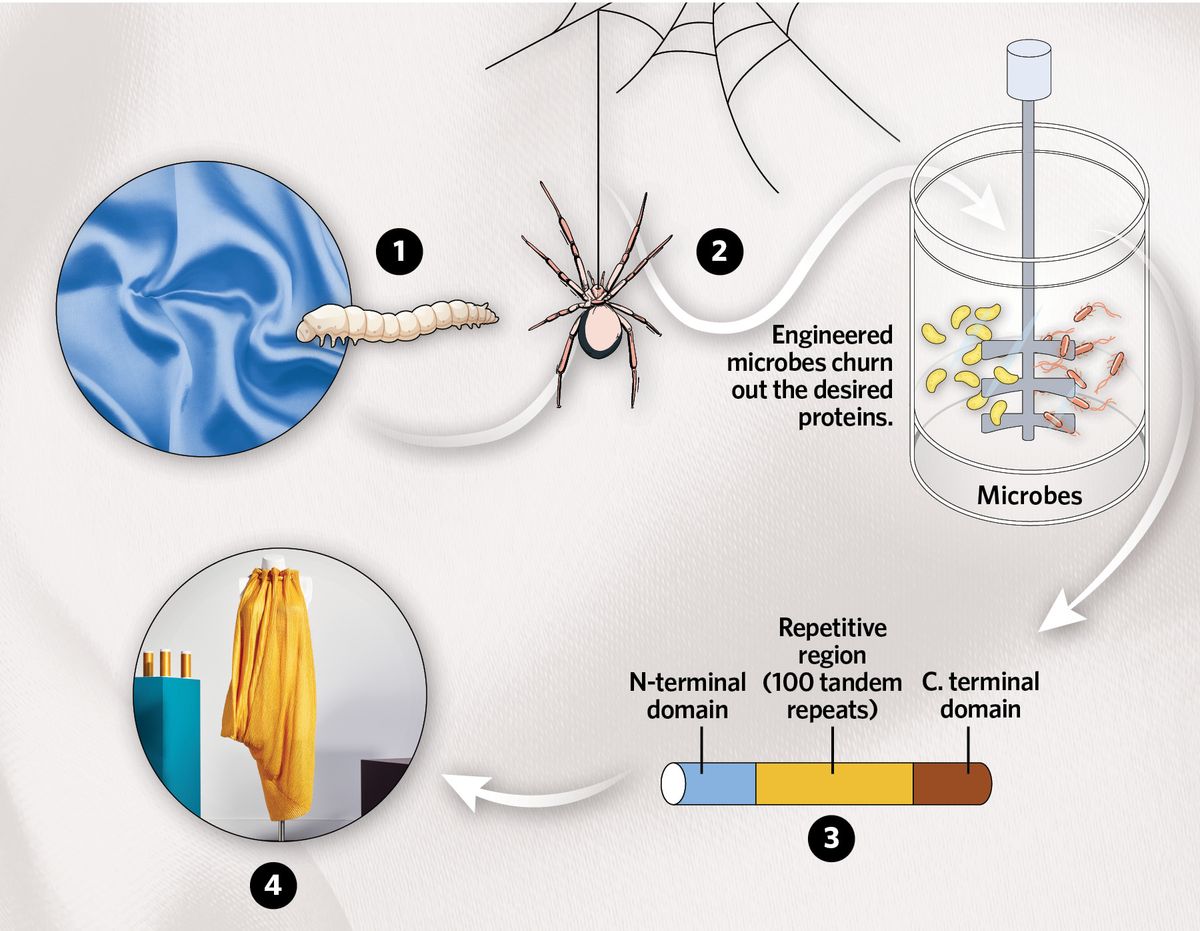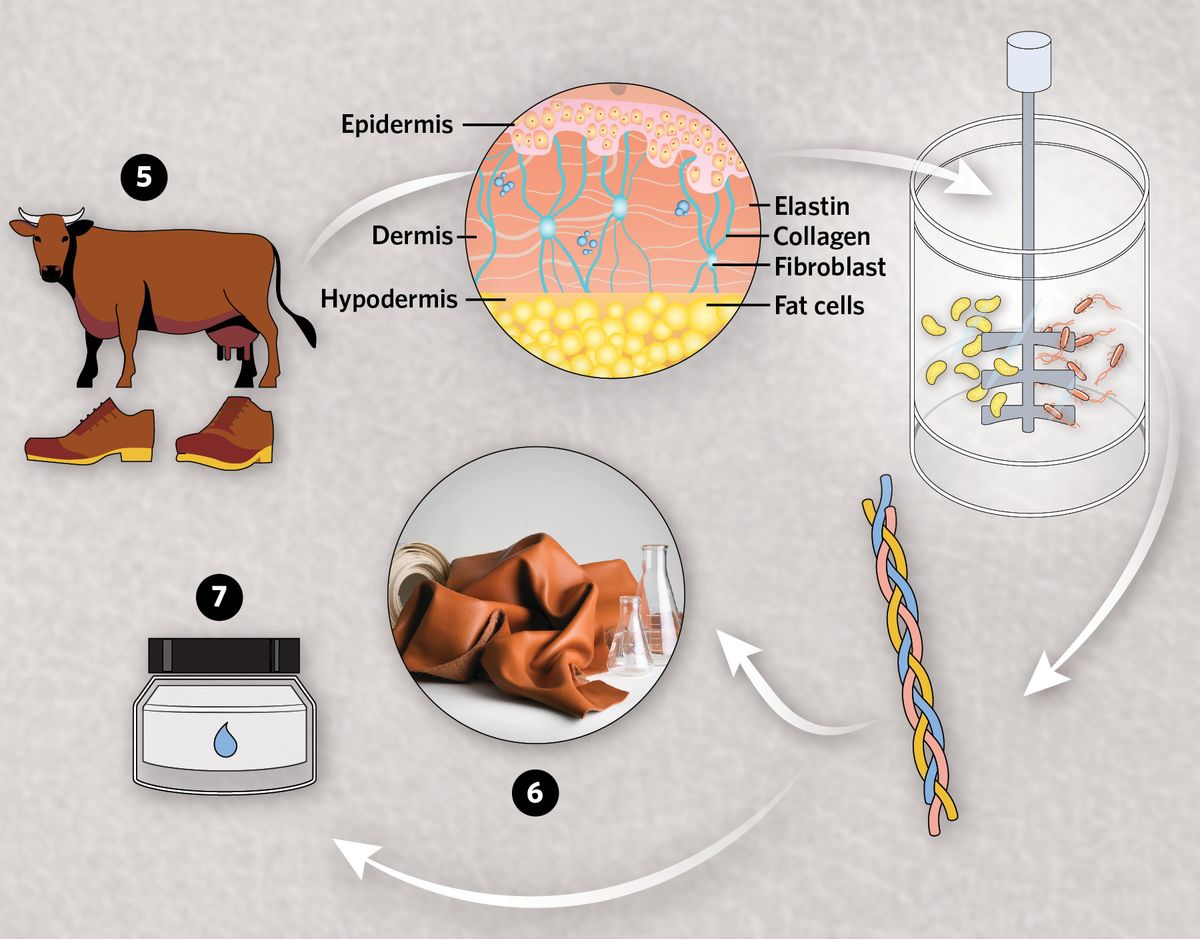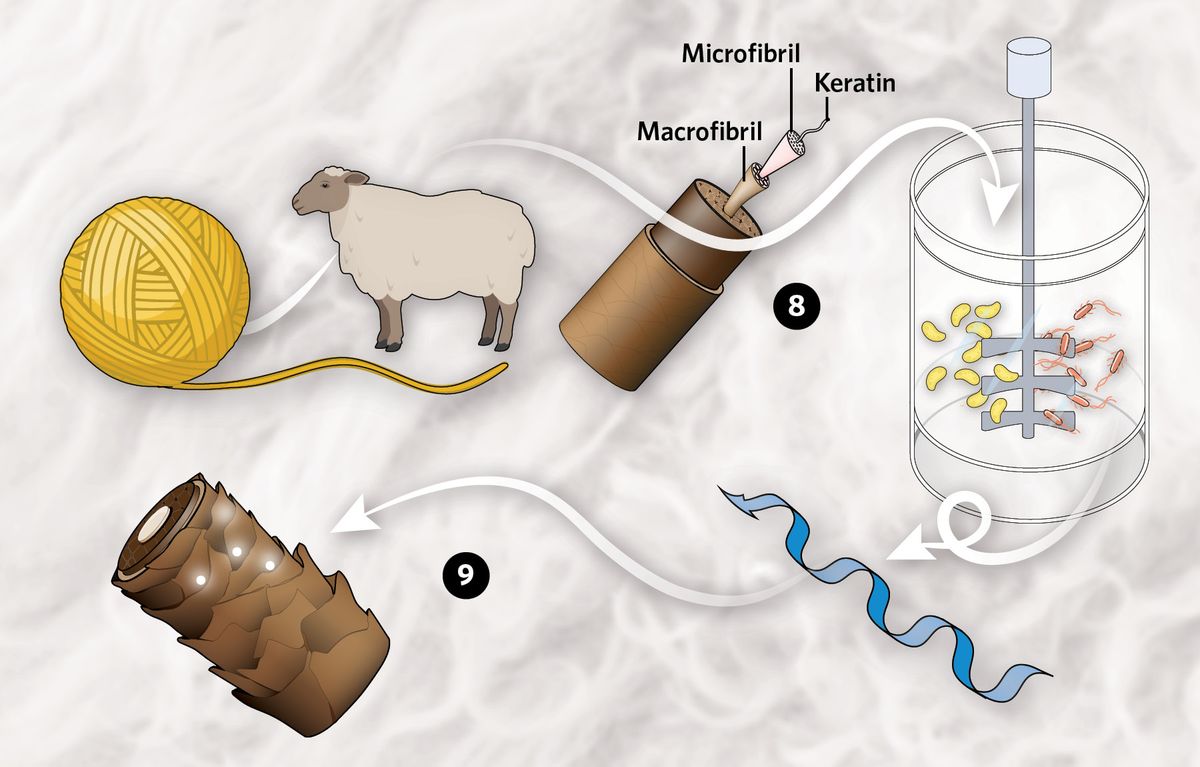Humans have used natural resources for garment production for thousands of years. While synthetic fabrics have dominated the textile industry in the last century, synthetic biologists are determined to harness natural proteins to sustainably produce better materials. Consequent advances in the production of relevant recombinant proteins at scale is changing the face of textile and personal care sectors.

(1) Silk is traditionally produced from silkworms. Scientists now turn their attention to spider silk to spin stronger fibers.
(2) Scientists studied the spidroin protein from dragline silk threads found in spider webs and coaxed microbes to produce it.
(3) Tweaking different aspects of the large spidroin protein resulted in successful production of recombinant spider silk protein in high quantities.
(4) Bolt Threads, a bio apparel company that produces spider silk-inspired fabrics, developed this Microsilk dress in collaboration with designer Stella McCartney.

(5) Leather production relies on processing dried animal skins. Scientists studied skin tissues to search for a sustainable alternative and chose to focus on collagen protein production.
(6) Using their synthetic biology expertise, scientists from Modern Meadow produced bio-based materials that structurally mimic leather.
(7) Since collagen is an essential protein in the extracellular matrix of the skin epithelial layer, scientists applied their technical expertise to develop collagen-based face creams.

(8) While studying wool for textile research, a team of scientists found it to be structurally similar to human hair. They focused on keratin-based peptides for hair repair.
(9) After analyzing the human keratin proteome, they homed in on a short peptide, commercialized as K18, to promote peptide bonds in damaged hair cortices.
Read the full story.
